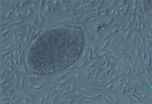(Press-News.org) Pasadena, CA--Astronomers have begun to blast 3 million cubic feet of rock from a mountaintop in the Chilean Andes to make room for what will be the world's largest telescope when completed near the end of the decade. The telescope will be located at the Carnegie Institution's Las Campanas Observatory—one of the world's premier astronomical sites, known for its pristine conditions and clear, dark skies. Over the next few months, more than 70 controlled blasts will break up the rock while leaving a solid bedrock foundation for the telescope and its precision scientific instruments.
The Giant Magellan Telescope (GMT) will have unprecedented capabilities, allowing it to peer back to the dawn of time, witnessing the birth of the first stars, galaxies and black holes, while also exploring planetary systems similar to our own around nearby stars in the Milky Way. The GMT will help astronomers probe the nature of dark matter and dark energy, mysterious forms of matter and energy that allow galaxies to form while the expansion of the universe accelerates.
At a ceremony on the mountaintop March 23, Dr. Wendy Freedman, director of the Carnegie Observatories and chair of the Giant Magellan Telescope Organization (GMTO) said, "Today marks a historic step toward constructing an astronomical telescope larger than any in existence today. Years of testing have shown that Las Campanas is one of the premier observatory sites in the world and the Carnegie Institution is proud to host the GMT."
The Giant Magellan Telescope is being built by a consortium of U.S., South Korean and Australian institutions with funding from both private and public sources. To date 40% of the telescope's ultimate $700M price tag has been committed and active fundraising is underway to secure the remaining funds.
Carnegie president Richard A. Meserve remarked, "The Carnegie Institution has been a world leader in telescope design and construction for over a century, building the largest and most advanced telescopes in the world. We continue this tradition with the GMT and look forward to the exciting scientific bounty it will yield."
In January of this year the partners cast the second of GMT's seven 28-foot diameter primary mirror segments at the University of Arizona's Steward Observatory Mirror Laboratory. The seven primary mirrors, each weighing 20 tons, are the heart of the giant telescope, providing nearly 4,000 square feet of light-gathering area.
Optical scientists at the Mirror Lab are putting the finishing touches on the first mirror segment, whose surface now matches its optical prescription to better than one millionth of an inch. Dr. Patrick McCarthy, the GMT project director, said "2012 is a banner year for the GMT project as we complete the design process, develop the primary mirrors, and begin work on the site in Chile."
###
The GMT partner institutions are the Carnegie Institution for Science, The Australian National University, Astronomy Australia Limited, Harvard University, the Korea Astronomy and Space Science Institute, The Smithsonian Institution, Texas A&M University, the University of Arizona, the University of Chicago, and the University of Texas at Austin. More information regarding the GMT project and Las Campanas Observatory can be found at: www.gmto.org.
The Carnegie Institution for Science (carnegiescience.edu) is a private, nonprofit organization headquartered in Washington, D.C., with six research departments throughout the U.S. Since its founding in 1902, the Carnegie Institution has been a pioneering force in basic scientific research. Carnegie scientists are leaders in plant biology, developmental biology, astronomy, materials science, global ecology, and Earth and planetary science.
Mountaintop blasting to mine the sky with the Giant Magellan Telescope
2012-03-26
ELSE PRESS RELEASES FROM THIS DATE:
Learning best when you rest: Sleeping after processing new info most effective, new study shows
2012-03-26
Nodding off in class may not be such a bad idea after all. New research from the University of Notre Dame shows that going to sleep shortly after learning new material is most beneficial for recall,
Titled "Memory for Semantically Related and Unrelated Declarative Information:
The Benefit of Sleep, the Cost of Wake," the study was published March 22 in PLOS One.
Notre Dame Psychologist Jessica Payne and colleagues studied 207 students who habitually slept for at least six hours per night. Participants were randomly assigned to study declarative, semantically ...
Researchers discover why humans began walking upright
2012-03-26
WASHINGTON—Most of us walk and carry items in our hands every day. These are seemingly simple activities that the majority of us don't question. But an international team of researchers, including Brian Richmond at the George Washington University, have discovered that human bipedalism, or walking upright, may have originated millions of years ago as an adaptation to carrying scarce, high-quality resources. This latest research was published in this month's "Current Biology."
The team of researchers from the U.S., England, Japan and Portugal investigated the behavior ...
Researchers develop new technique to assess diversity of plant species from afar
2012-03-26
EAST LANSING, Mich. --- By analyzing vegetation information collected by satellites over time instead of for just one day, scientists in the Michigan State University Center for Systems Integration and Sustainability (CSIS) have developed a novel procedure to assess the composition of plant species in an area.
Researchers long have used multi-spectral images (which include radiation outside human perception, such as infrared) and other remotely sensed data to create maps of vegetation around the globe. But seasonal changes in vegetation can limit the usefulness of these ...
Embryonic stem cells shift metabolism in cancer-like way upon implanting in uterus
2012-03-26
Shortly after a mouse embryo starts to form, some of its stem cells undergo a dramatic metabolic shift to enter the next stage of development, Seattle researchers report today. These stem cells start using and producing energy like cancer cells.
This discovery is published today in EMBO, the European Molecular Biology Organization journal.
"These findings not only have implications for stem cell research and the study of how embryos grow and take shape, but also for cancer therapy," said the senior author of the study, Dr. Hannele Ruohola-Baker, University of Washington ...
A shiny new tool for imaging biomolecules
2012-03-26
At the heart of the immune system that protects our bodies from disease and foreign invaders is a vast and complex communications network involving millions of cells, sending and receiving chemical signals that can mean life or death. At the heart of this vast cellular signaling network are interactions between billions of proteins and other biomolecules. These interactions, in turn, are greatly influenced by the spatial patterning of signaling and receptor molecules. The ability to observe signaling spatial patterns in the immune and other cellular systems as they evolve, ...
Stroke Progress Review Group sets priorities for future NIH stroke rehabilitation research
2012-03-26
West Orange, NJ. March 23, 2012. In 2011, the National Institute of Neurological Disorders and Stroke (NINDS) convened the Stroke Progress Review Group (SPRG) to conduct a final 10-year review of the state of stroke research. The goal is to set priorities and shape future NINDS programs and policies. While SPRG found much available data for maximizing stroke rehabilitation outcomes, translation to clinical practice is inadequate. To realize the enormous potential for improving rehabilitation and recovery, more resources should be applied to implementing and directly supporting ...
Moffitt Cancer Center researchers link stigma to depression among lung cancer patients
2012-03-26
TAMPA, Fla. (March 23, 2012) – Studying the role of social stigma in depression for lung cancer patients, researchers at Moffitt Cancer Center in Tampa, Fla., have found that depression can be heightened by a lung cancer patient's sense of social rejection, internalized shame and social isolation. These factors may contribute to depression at rates higher than experienced by patients with other kinds of cancer.
Their study was published in a recent issue of Psycho-Oncology (21:2012).
"To the best of our knowledge, this is the first study to examine the relationship ...
American Chemical Society Presidential Sessions focus on outreach, chemistry innovations
2012-03-26
SAN DIEGO, March 23, 2012 — More than a dozen symposia and other events at the American Chemical Society (ACS) 243rd National Meeting & Exposition are being sponsored or recommended by noted science communicator and ACS President Bassam Z. Shakhashiri, Ph.D. They range from a science outreach event for children at PETCO Park to news from an emerging field of chemistry that promises to produce medicines inside patients' bodies, as well as a symposium on communicating science to the public.
Communicating science is a major part of Shakhashiri's presidential theme for the ...
Complications in patients undergoing PCI tend to occur within first 30 days
2012-03-26
BOSTON, MA—Percutaneous coronary intervention (PCI), also known as coronary angioplasty or angioplasty, is a procedure used to treat acute coronary syndromes. PCI involves opening a blocked blood vessel by threading and inflating a balloon-tipped tube into the vessel. Sometimes a stent is also inserted to keep the blood vessel open.
While undergoing PCI treatment, doctors usually give patients medicine to prevent complications that may occur from the procedure.
In a new study by researchers at Brigham and Women's Hospital (BWH), types and timing of cardiovascular ...
Study examines treatment of heart failure with bone marrow cells
2012-03-26
Use of a patient's bone marrow cells for treating chronic ischemic heart failure did not result in improvement on most measures of heart function, according to a study appearing in JAMA. The study is being published early online to coincide with its presentation at the American College of Cardiology's annual scientific sessions.
Cell therapy has emerged as an innovative approach for treating patients with advanced ischemic heart disease, including those with heart failure. "In patients with ischemic heart disease and heart failure, treatment with autologous [derived from ...


